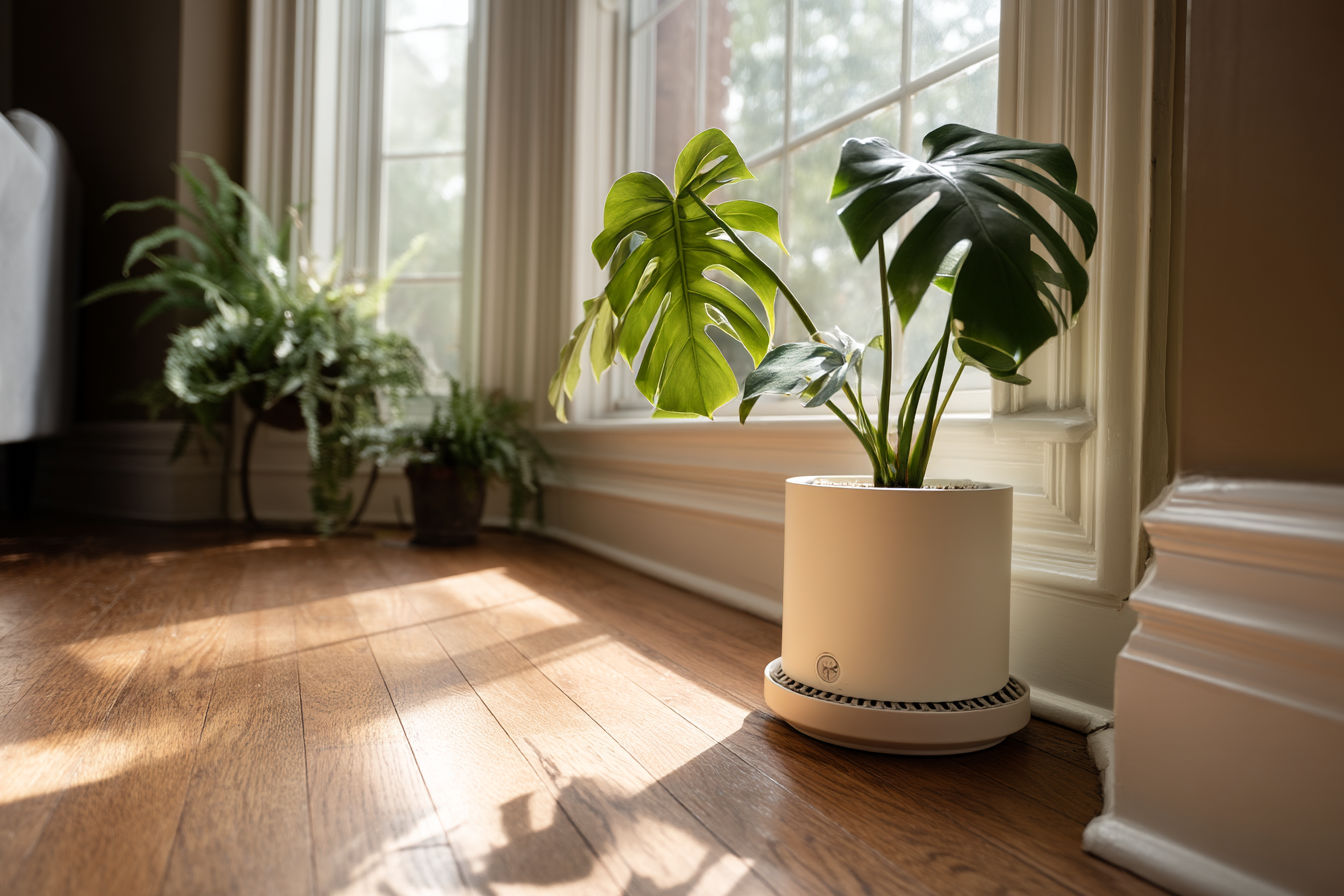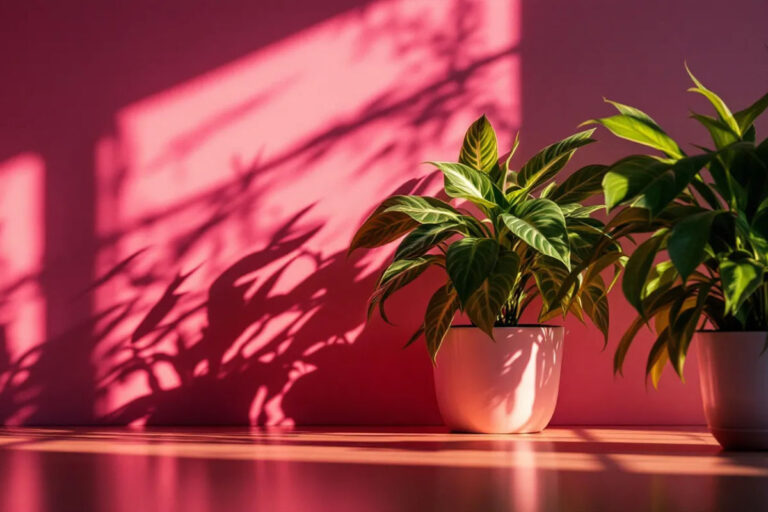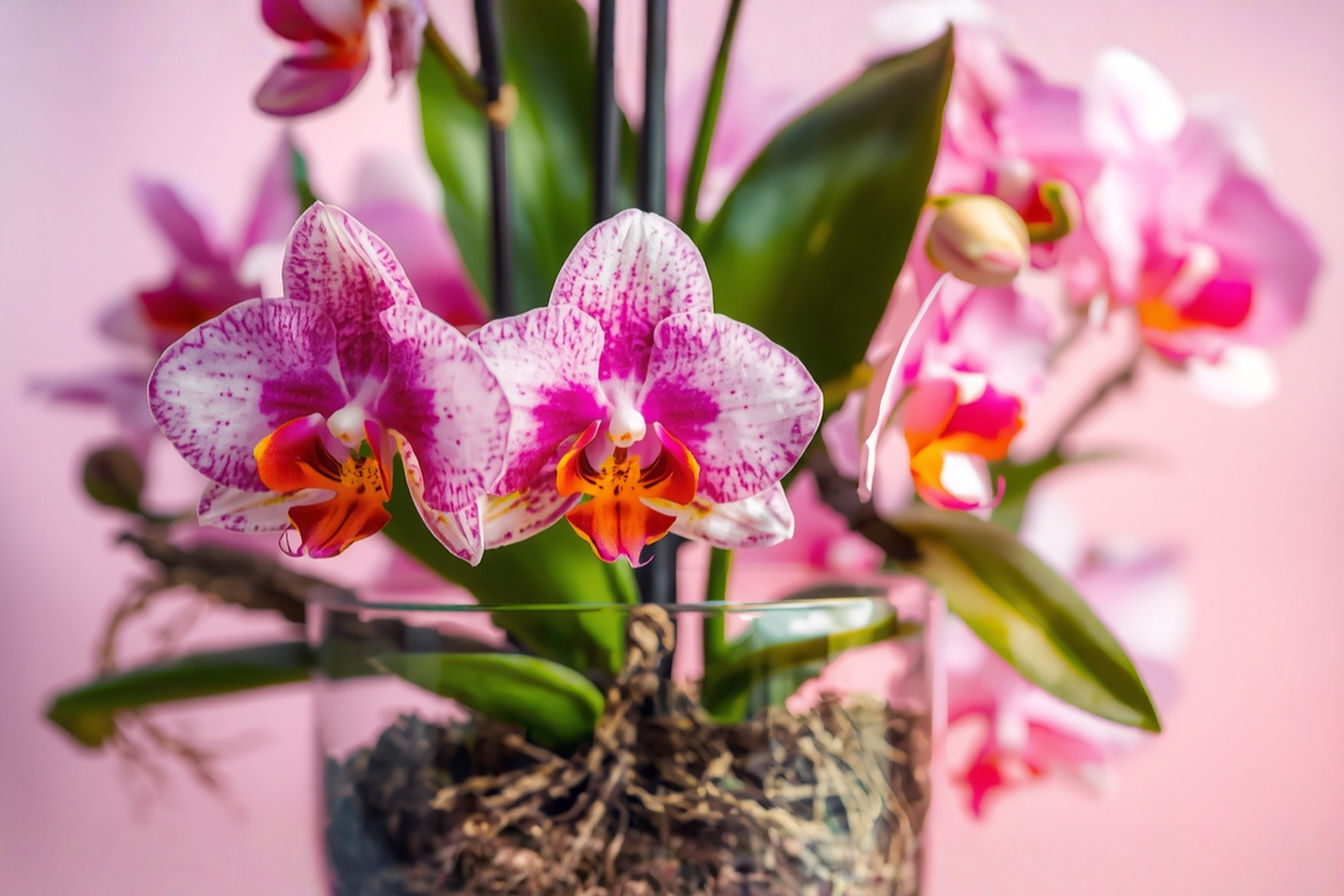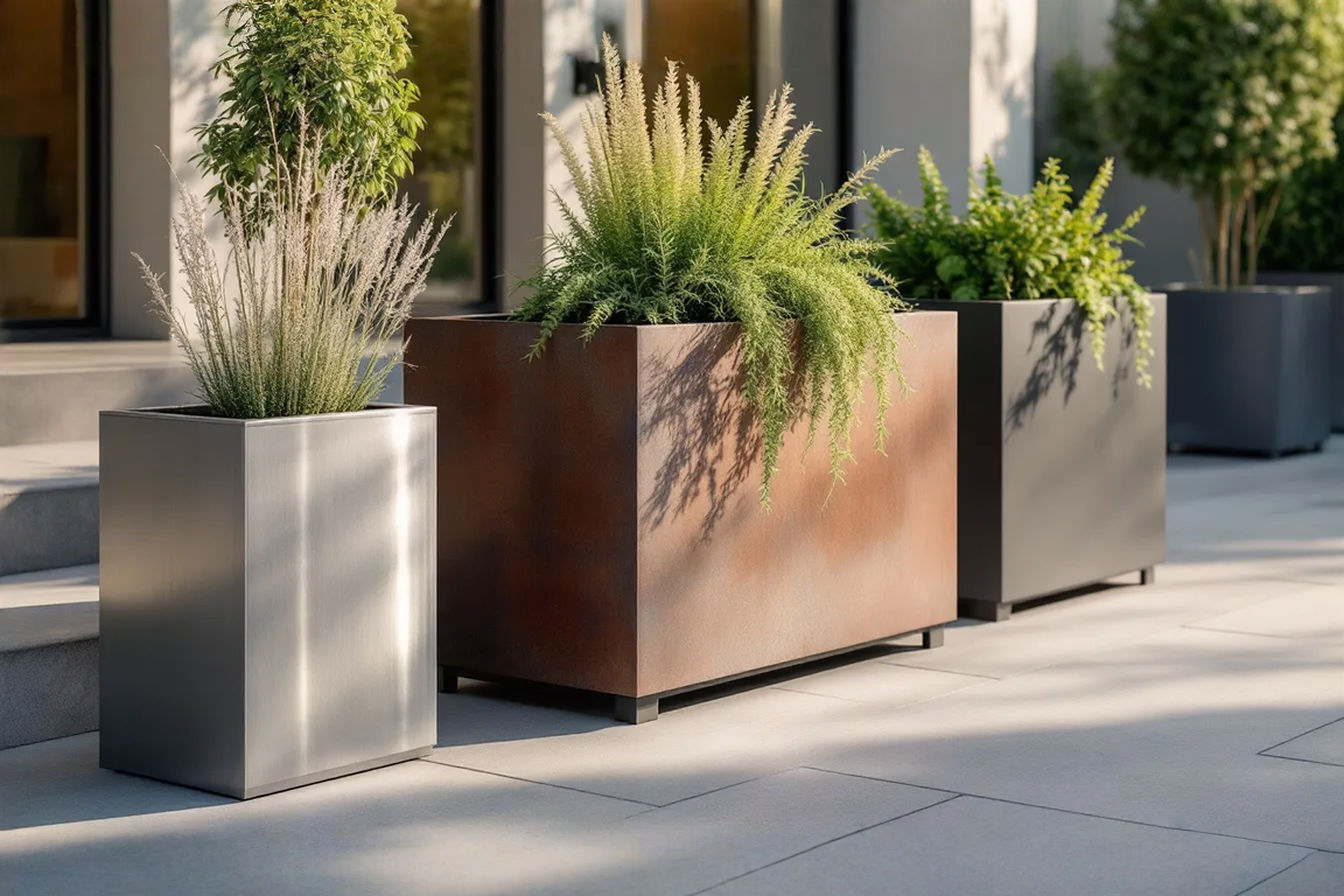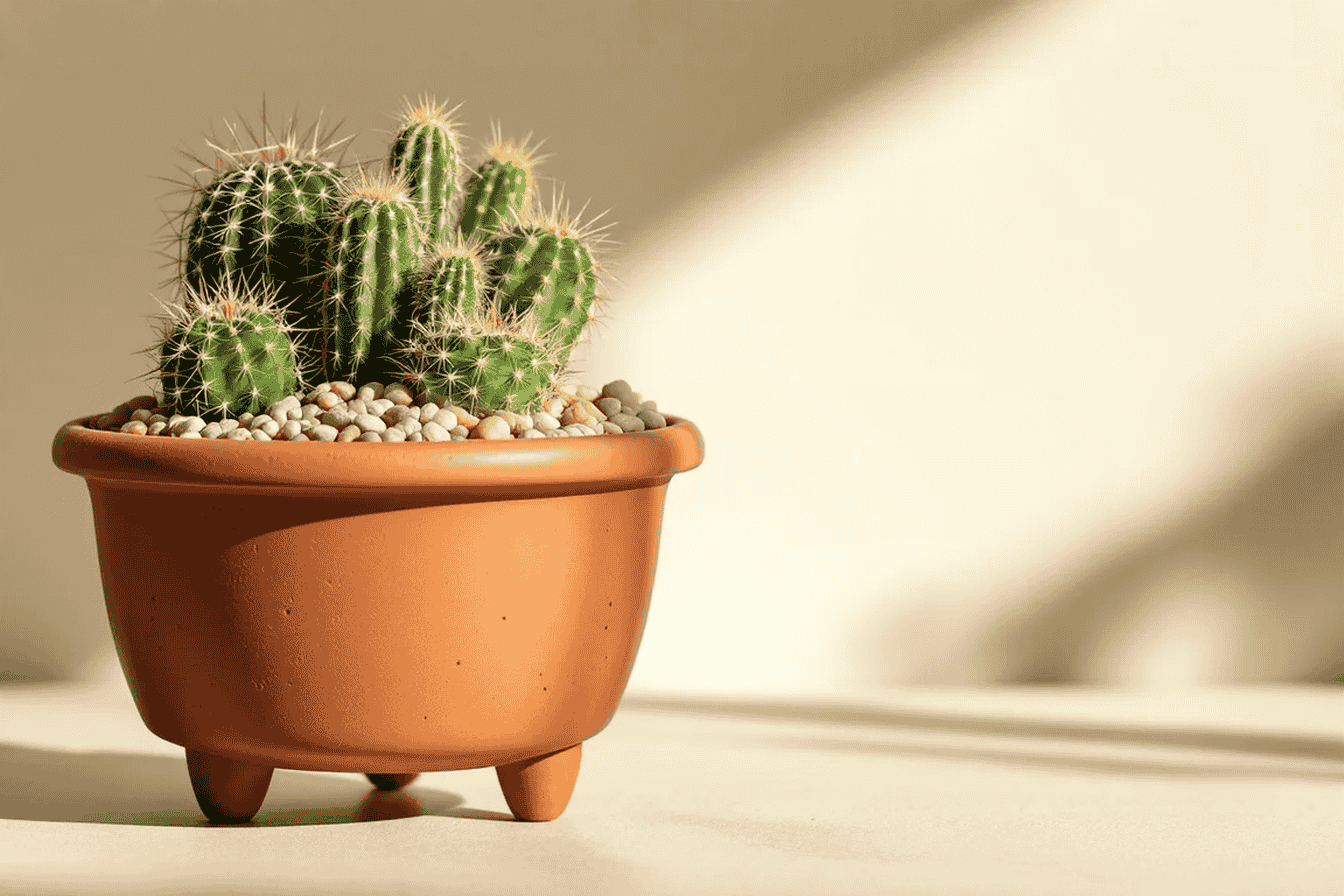This post may contain affiliate links. If you make a purchase through these links, we may earn a commission at no additional cost to you.
Imagine stepping into your warm kitchen on a frosty January morning and reaching up to snip a few sprigs of fresh basil for your omelet, or plucking aromatic rosemary leaves to season a hearty winter stew. Outside, the garden may lie dormant under a blanket of snow, but inside, your herbs flourish in graceful hanging baskets, adding both flavor to your cooking and life to your winter décor.
Winter need not signal the end of fresh herb harvesting. For many home cooks and gardening enthusiasts, the cold months typically mean settling for dried herbs or expensive store-bought alternatives that lack the vibrant flavors of garden-fresh varieties. Indoor hanging herb gardens offer an elegant solution to this seasonal dilemma, transforming unused vertical space into productive growing areas that ensure your culinary adventures continue uninterrupted year-round.
These suspended gardens do more than just provide fresh ingredients; they create living art in your home during months when outdoor greenery becomes scarce. Hanging baskets filled with cascading thyme, mint, or oregano bring texture, fragrance, and a touch of nature’s beauty to interior spaces. Their elevated position makes daily harvesting remarkably convenient while keeping precious counter and windowsill space free for other uses.
With proper planning and care, anyone—regardless of gardening experience or available space—can cultivate a thriving indoor herb collection during winter. This comprehensive guide explores everything you need to know about creating, maintaining, and enjoying hanging herb baskets throughout the coldest months, ensuring your kitchen remains supplied with garden-fresh flavors no matter what the weather brings.
Benefits of Indoor Hanging Herb Gardens in Winter
The advantages of growing herbs in suspended containers extend far beyond mere convenience. Year-round access to fresh culinary herbs represents perhaps the most immediate benefit, eliminating those disappointing moments of reaching for fresh basil or cilantro only to remember the growing season ended months ago. The flavor difference between freshly harvested herbs and their dried counterparts can transform ordinary winter meals into extraordinary culinary experiences.
Space optimization makes hanging herb gardens particularly valuable during winter when houseplants often compete for limited sunny windowsills. By utilizing vertical growing areas, these suspended gardens allow even apartment dwellers with minimal square footage to maintain productive herb collections. The hanging configuration keeps plants safely elevated away from curious pets, cold drafts near floor level, and potential water damage to surfaces.
The aesthetic contribution of hanging herb gardens shouldn’t be underestimated. During winter’s monochromatic months, these living displays introduce vibrant greens, varied textures, and sometimes even delicate flowers into your home environment. Many herb varieties cascade beautifully over basket edges, creating natural living sculptures that soften architectural lines and enhance interior décor with minimal effort.
Indoor herbs serve as natural air purifiers, filtering common household pollutants while releasing clean oxygen. This benefit becomes particularly valuable during winter when closed windows reduce natural ventilation. Many herbs also release aromatic compounds that can subtly fragrance your home with their distinctive scents, creating an uplifting sensory experience during dreary winter days.
The economic advantage of maintaining indoor herb gardens grows increasingly apparent throughout winter. A single herb plant can provide multiple harvests for months, representing significant savings compared to repeatedly purchasing small quantities of packaged fresh herbs. With organic herbs often commanding premium prices, your hanging garden quickly returns your initial investment through countless fresh additions to winter meals.
Perhaps most overlooked are the therapeutic benefits of tending indoor herbs during winter months. The simple acts of watering, pruning, and harvesting provide meaningful contact with growing things during a season when many experience disconnection from nature. This regular interaction with plants can help counter winter blues, providing purpose and satisfaction through nurturing living organisms when outdoor gardening options remain limited.
Selecting the Perfect Hanging Baskets
The foundation of a successful indoor herb garden begins with choosing appropriate containers. Material selection significantly impacts both plant health and aesthetic integration with your home décor. Ceramic hanging planters offer elegant durability and excellent moisture retention, though their weight requires secure hanging mechanisms. Terracotta provides exceptional breathability that helps prevent root rot but may dry out quickly in winter’s low humidity.
Lightweight plastic options have evolved beyond utilitarian designs to include convincing faux ceramic, stone, or metal finishes that combine practicality with style. These lightweight containers prove especially valuable when hanging from standard ceiling hooks or tension rods. For a more natural aesthetic, woven baskets or macramé hangers holding removable liners create textural interest while complementing both traditional and contemporary interiors.
Drainage represents the non-negotiable feature for any herb container. Without proper water escape routes, even the most attentive care regimen can lead to waterlogged soil and root rot. Select baskets with built-in drainage holes or create your own in plastic containers. Remember to pair these drainage features with appropriate water-catching solutions to protect surfaces below, such as detachable saucers or decorative cachepots that can hold excess moisture.
Size considerations extend beyond the simple diameter measurement. Depth affects root development capabilities, while overall volume determines how frequently watering becomes necessary. Herbs generally prefer containers offering 6-8 inches of depth, though varieties with more extensive root systems may require deeper vessels. Consider the mature size of chosen herbs; overcrowding leads to competition for nutrients and increased disease susceptibility.
Hanging mechanisms deserve careful attention, as they must support the considerable weight of soil, plants, and water. Macramé hangers distribute weight through multiple cords, making them ideal for heavier ceramic or terracotta containers. Chain systems with S-hooks allow for easy height adjustments, while telescoping ceiling hooks provide secure anchoring for substantial displays. For rental properties where ceiling mounting proves impossible, tension rods between cabinets or specialized over-door hanging systems offer non-permanent alternatives.
Self-watering features can dramatically simplify winter herb maintenance. These systems typically incorporate a reservoir that gradually releases moisture to the soil as needed, extending the time between manual waterings. Modern designs disguise these functional elements within attractive containers, maintaining aesthetic appeal while reducing maintenance demands. For busy households or frequent travelers, this technology helps ensure consistent moisture levels critical to herb vitality.
Some particularly effective options include the modern ceramic hanging planters from Angus & Celeste, which combine elegant design with practical drainage systems, and the affordable self-watering plastic hanging baskets from IKEA’s HJÄRTELIG collection, which incorporate natural rope elements for a balanced contemporary look.
Best Herbs for Indoor Winter Growing
Not all herbs perform equally in indoor winter conditions. Light availability, temperature fluctuations, and humidity levels all influence herb selection for hanging basket cultivation. Mediterranean herbs generally excel in the drier air typical of heated winter homes, while tender herbs with higher humidity requirements may need additional environmental modifications.
Basil, the summer garden favorite, can thrive indoors with sufficient light exposure. Compact varieties like ‘Spicy Globe’ or ‘Greek Columnar’ maintain bushier growth habits better suited to hanging displays than their larger-leaved Italian cousins. These smaller-leaved varieties also typically offer more concentrated flavor, requiring fewer leaves to achieve the desired culinary impact.
Mint family members rank among the most rewarding indoor herbs, with vigorous growth habits that quickly fill hanging baskets with cascading stems. Peppermint, spearmint, chocolate mint, and apple mint all perform admirably in moderate indoor light. Their spreading growth habit, which becomes problematic in garden settings, remains perfectly contained in hanging baskets while creating attractive trailing displays.
Thyme varieties offer excellent winter performance with minimal space requirements. Lemon thyme, English thyme, and creeping thyme all maintain compact growth while tolerating the drier conditions common in winter homes. Their tiny leaves remain flavorful with minimal light requirements, making them perfect candidates for hanging baskets placed slightly away from direct window light.
Rosemary, with its distinctive pine-like fragrance, adapts well to indoor cultivation when provided bright exposure. Prostrate or creeping varieties naturally drape over basket edges, creating dramatic cascading effects. While demanding excellent drainage, rosemary’s woody growth provides structural interest among softer-stemmed herbs, adding architectural dimension to hanging displays.
Chives deliver reliable winter performance, their slender tubular leaves growing steadily enough to provide regular harvests without requiring intense light. Both onion chives and more delicate garlic chives work beautifully in hanging arrangements, their vertical growth creating height variation while their distinctive flavors enhance winter soups and egg dishes.
Oregano, sage, and winter savory represent the Mediterranean herb trio that consistently outperforms other varieties in typical indoor conditions. Their natural drought tolerance translates to forgiveness regarding occasional watering lapses, while their concentrated flavors mean even small quantities significantly impact winter cooking endeavors.
Parsley deserves special consideration for winter cultivation, as its high vitamin content makes it particularly valuable during cold and flu season. Flat-leaf varieties generally produce better indoor results than curly types, which may become stunted without ideal conditions. While parsley grows upright rather than trailing, its attractive foliage and culinary versatility earn its place in mixed herb baskets.
Cilantro, despite its reputation for bolting quickly outdoors, often performs surprisingly well in cooler indoor winter environments. Succession planting within the same basket can ensure continuous harvests, with new seeds started as older plants begin flowering. The cooler indoor temperatures of winter often delay bolting, extending the useful life of each planting.
Herbs best avoided in indoor hanging arrangements include dill and fennel, whose tall growth habits and deep taproots make them poorly suited to container constraints. Bay laurel, while excellent as a potted specimen, grows too large for most hanging applications, and tarragon often struggles with the dry air of heated winter homes, becoming dormant or developing poor flavor profiles.
Creating the Optimal Growing Environment
Light availability represents the most critical environmental factor affecting indoor herb performance. Most culinary herbs require minimum light equivalent to 6 hours of direct sunlight for optimal flavor development and steady growth. Southern or southwestern window exposures typically provide the strongest winter light, making them prime locations for hanging herb displays.
When natural light proves insufficient, supplemental grow lights transform previously unsuitable locations into productive growing areas. Modern LED grow lights consume minimal electricity while providing precisely calibrated light spectrums that promote herb development. Full-spectrum LED strips can be discreetly mounted under cabinets or shelves, illuminating hanging baskets below while blending seamlessly with home décor.
Temperature stability significantly impacts herb vitality. Most culinary herbs prefer daytime temperatures between 65-75°F (18-24°C) with nighttime readings approximately 10 degrees cooler. Avoid placing hanging baskets near heating vents, radiators, or drafty windows where extreme temperature fluctuations can stress plants. The ideal location maintains consistent temperatures while providing adequate light exposure.
Winter indoor air typically lacks the humidity levels herbs prefer, particularly in homes with forced-air heating systems. Grouping multiple hanging baskets creates beneficial microenvironments where plants help maintain higher humidity around neighboring containers. For additional moisture, consider placing shallow water trays filled with decorative stones near (but not touching) hanging herbs, allowing evaporation to increase local humidity without risking root rot.
Air circulation prevents fungal issues common in indoor herb cultivation. Gentle airflow around plant foliage helps manage humidity while strengthening stems and reducing disease susceptibility. Small portable fans used occasionally can provide sufficient movement, though avoid constant direct airflow that might excessively dry soil. Proper spacing between plants within baskets and between adjacent hanging displays similarly promotes beneficial air movement.
Strategic placement throughout living spaces allows herbs to receive appropriate environmental conditions while maximizing their decorative impact. Kitchen windows provide convenient harvesting access, while living room exposures showcase the ornamental qualities of cascading herbs. Bathroom installations can benefit from naturally higher humidity levels, though adequate light must still be ensured.
Consider creating a dedicated herb wall using graduated height hanging mechanisms, allowing multiple baskets to receive appropriate light from a single bright window. This approach transforms an ordinary wall into a striking vertical garden while maximizing production from limited window exposures. Tension rod systems between cabinetry or specialized plant hangers can support lightweight containers in unexpected locations, expanding potential growing areas.
Common environmental challenges include excessive dryness, insufficient light, and temperature inconsistency. Address these issues through strategic humidification, supplemental lighting, and thoughtful placement rather than compromising on herb selection. Changing seasonal light patterns may necessitate occasional relocation of hanging baskets to maintain optimal growing conditions throughout winter months.
Soil, Planting, and Arrangement Techniques
Proper growing medium fundamentally influences herb performance in the unique conditions of hanging baskets. Commercial potting mixes formulated specifically for herbs provide ideal drainage while retaining sufficient moisture for healthy root development. These specialized blends typically contain ingredients like perlite, vermiculite, and coconut coir that create optimal aeration while preventing excessive water retention.
Creating custom soil mixtures allows precise adaptation to individual herb needs. A reliable base formula combines two parts quality potting soil with one part coarse perlite and one part compost or worm castings. For Mediterranean herbs requiring exceptional drainage, increase perlite proportion and add coarse sand. For moisture-loving varieties, incorporate additional coconut coir to improve water retention without sacrificing necessary aeration.
Layering techniques within hanging baskets promote proper drainage while maximizing growing space. Begin with a bottom layer of plastic mesh or landscape fabric cut slightly larger than drainage holes to prevent soil loss while allowing water passage. Add a 1-inch layer of porous material like pebbles, terracotta fragments, or pine bark to create a drainage zone. This foundation ensures excess water moves away from root zones even in heavily watered containers.
Plant spacing within hanging arrangements requires balancing aesthetic goals with plant health requirements. Allow minimum 3-inch spacing between most herb varieties, increasing to 4-5 inches for larger species like rosemary or sage. This spacing permits adequate air circulation while providing room for root development. Remember that proper spacing initially creates healthier, more productive plants that ultimately produce fuller displays than overcrowded arrangements.
Companion planting principles apply meaningfully to hanging herb gardens. Group varieties with similar water and light requirements to simplify care routines. Combine upright growers like parsley or chives with trailing types such as thyme or oregano to create visually interesting multi-dimensional displays. Consider potential allelopathic effects; for instance, separate mint family members from other herbs as their root exudates may inhibit neighboring plants.
Aesthetic arrangement approaches include monochromatic collections featuring multiple varieties within the same herb family, creating subtle texture variations with consistent coloration. Alternatively, dramatic contrast plantings might combine silver-leaved sage with deep green parsley and purple basil. Culinary theme baskets gather herbs commonly used together in specific cuisines, such as Mediterranean (rosemary, oregano, thyme) or Asian (cilantro, mint, Thai basil) collections.
Multi-level planting maximizes productivity within individual baskets by utilizing both top and side growing surfaces. Modern containers often feature multiple side openings specifically designed for this approach. Plant taller varieties centrally while tucking trailing types into side openings, creating fully dimensional growing displays. This technique particularly benefits cascading herbs like creeping thyme or trailing rosemary, allowing their natural growth habits to enhance the basket’s appearance.
When initially arranging herbs, position plants slightly below the soil surface, allowing space for additional growing medium to prevent water runoff. Water thoroughly after planting to eliminate air pockets around root zones. Allow newly planted baskets to stabilize for several days before hanging, ensuring proper root establishment and soil settling that prevents later shifting.
Watering and Feeding Your Hanging Herbs
Water management presents unique challenges in hanging herb containers. Suspended baskets experience accelerated drying due to increased air circulation around their entire surface area, requiring vigilant monitoring and consistent moisture provision. Unlike conventional planters, hanging baskets can transition from properly moist to dangerously dry within a single day during winter’s low humidity conditions.
Effective watering techniques focus on thoroughness rather than frequency. When moisture becomes necessary, apply water slowly until it emerges from drainage holes, ensuring complete soil saturation. This approach promotes deeper root development while preventing the shallow watering habit that leaves lower root zones perpetually dry. Allow excess water to drain completely, emptying catch saucers promptly to prevent reabsorption.
Testing soil moisture before watering prevents both under and overwatering scenarios. Insert your finger approximately one inch into the growing medium; if soil feels dry at this depth, watering becomes appropriate. Alternatively, lift the container slightly to assess weight, as properly hydrated soil weighs significantly more than dry medium. With experience, this simple heft test quickly reveals moisture status without disturbing plant roots.
Watering frequency varies dramatically based on environmental conditions, container materials, and herb varieties. Porous containers like terracotta may require attention every 2-3 days, while plastic or glazed ceramic baskets might need water only weekly. Mediterranean herbs including rosemary and thyme prefer slight drying between waterings, while basil and parsley perform better with more consistent moisture. Observe individual plant responses and adjust accordingly rather than following rigid schedules.
Signs of improper watering appear through distinctive plant responses. Underwatered herbs typically display wilting, curling leaf edges, and brittle stems, while their soil pulls away from container edges. Overwatered specimens develop yellowing lower leaves, slowed growth, and sometimes fungal infections visible as white powdery patches on soil or stems. Both conditions require immediate intervention through adjusted watering practices rather than compensatory fertilization.
Winter feeding requirements differ substantially from summer protocols. Indoor herbs grow more slowly during winter months, requiring less frequent but still regular nutrient supplementation. Diluted liquid organic fertilizers applied monthly generally provide sufficient nutrition without encouraging the excessive soft growth that attracts pests. Fish emulsion and seaweed extracts offer balanced nutrition, though their odor might temporarily impact indoor environments.
Organic fertilizing approaches include periodic top-dressing with worm castings, which provide gentle nutrition while improving soil structure. Quarter-strength compost tea applications every 3-4 weeks deliver beneficial microorganisms alongside plant nutrients. For convenience, slow-release organic granules pressed into the soil surface in early winter can provide sustained nutrition throughout the season with minimal effort.
Self-watering systems dramatically simplify winter herb maintenance. Commercial versions typically incorporate wicking mechanisms that draw water from reservoirs into soil as needed. DIY alternatives include cotton rope wicks threaded through drainage holes into water containers below, or water-absorbing polymer crystals mixed sparingly into potting medium. These systems reduce watering frequency while maintaining more consistent moisture levels than manual approaches typically achieve.
Maintenance, Harvesting, and Troubleshooting
Regular pruning significantly influences both herb productivity and appearance in hanging displays. Strategic trimming encourages branching that creates fuller, more compact growth habits ideal for suspended containers. Rather than removing entire stems, pinch growing tips just above leaf nodes to stimulate lateral growth. This technique applies particularly effectively to basil, mint, and oregano, which respond to harvesting with accelerated branching.
Harvesting methods directly impact future herb production. When gathering herbs for culinary use, remove no more than one-third of any plant’s foliage during a single harvest. This conservative approach maintains sufficient leaf surface for photosynthesis while encouraging new growth. Cut stems cleanly with sharp scissors rather than tearing, which can damage remaining plant tissue and create entry points for pathogens.
Rotation practices prevent uneven growth caused by directional light exposure. Quarter-turn baskets weekly to ensure all sides receive adequate illumination, preventing the lopsided development common in stationary containers. This simple habit promotes symmetrical growth while reducing the leggy stretching that occurs when plants continuously reach toward light sources.
Managing leggy growth remains an ongoing challenge in winter’s lower light conditions. Beyond rotation, address excessive stem elongation through consistent pruning of tallest growth, encouraging energy redirection to lateral buds. If supplemental lighting proves impractical, consider relocating affected baskets to brighter positions or accepting more compact herb varieties better adapted to winter light levels.
Pest management begins with prevention through proper environmental conditions. Winter’s dry indoor air typically discourages many common garden pests, though certain insects still threaten indoor herbs. Aphids, spider mites, and fungus gnats represent the most frequent invaders, each responding to specific management approaches. Regular inspection of leaf undersides and soil surfaces allows early intervention before populations expand beyond easy control.
Natural pest control methods provide safer alternatives to chemical interventions in food-producing plants. Insecticidal soap applications effectively manage soft-bodied insects while remaining food-safe when properly diluted and applied. Neem oil treats persistent infestations while disturbing pest life cycles without introducing harmful residues. For fungus gnats, allow soil surfaces to dry completely between waterings and consider top-dressing with coarse sand to discourage egg-laying.
Disease prevention relies primarily on environmental management. Proper spacing, adequate air circulation, and appropriate watering techniques dramatically reduce fungal disease susceptibility. Powdery mildew, the most common affliction of indoor herbs, responds well to improved air movement and reduced overhead watering. Remove and dispose of affected leaves promptly to prevent spread, and in severe cases, consider milk sprays (1 part milk to 9 parts water) as an organic treatment option.
Soil refreshment becomes necessary as growing medium compacts over time. After several months of growth, top-dress containers with fresh potting mix combined with compost to restore structure and nutrition without disturbing established root systems. Complete repotting becomes appropriate when herbs become severely root-bound or soil structure degrades beyond amendment capabilities, typically every 1-2 years depending on container size and plant vigor.
Creative Design Ideas for Herb Hanging Displays
Thematic arrangements transform functional herb gardens into distinctive design statements. Culinary theme baskets gather complementary flavors while creating visually cohesive displays suited to particular cooking styles. Italian herb collections featuring basil, oregano, thyme and rosemary offer convenient access to pizza and pasta essentials. Mediterranean combinations incorporating lavender, sage, and marjoram create sophisticated flavor palettes with silver-green color harmonies.
Textural contrast drives visually dynamic arrangements regardless of herb selection. Combine feathery dill with broad-leaved basil and slender chives to create intricate textural interplays that remain interesting even during growth cycles with limited flowering. This design approach emphasizes the distinctive leaf forms that make herb gardens visually appealing throughout their productive lifespan.
Color-focused designs explore the surprising palette variations available within the herb kingdom. Silver-leaved herbs like sage and lavender contrast dramatically with deep green parsley or purple basil varieties. Variegated lemon thyme, tricolor sage, and golden oregano introduce unexpected brightness to winter displays while maintaining full culinary functionality.
Multi-basket installations create dramatic living walls when properly executed. Graduated hanging heights allow cascading herbs to develop fully while ensuring adequate light reaches each container. Group odd numbers of baskets (3, 5, or 7) for visually balanced arrangements that avoid rigid symmetry. Maintain consistent container styles while varying plant selections to create cohesive yet interesting vertical gardens.
Kitchen-specific placement strategies maximize both convenience and design impact. Consider suspending herb baskets near task lighting over kitchen islands, allowing convenient harvesting during meal preparation. Alternatively, create herb curtains in kitchen windows using tension rods supporting multiple small containers, providing privacy screening alongside culinary benefits.
Seasonal adaptations maintain visual interest throughout winter. Incorporate cool-weather edible flowers like violas or pansies among herb plantings for unexpected color accents. During holiday seasons, temporarily include small strands of battery-operated LED lights woven carefully through herb baskets to create festive illuminated displays that highlight plant textures after dark.
Living wreath constructions offer unique presentation options for herb collections. Wire wreath forms lined with sphagnum moss provide growing matrices for thyme, oregano, and other compact herbs, creating dramatic circular displays. These distinctive arrangements perform particularly well in bright kitchen windows where their complete form remains visible from multiple angles.
Integrating herbs with houseplants creates interesting mixed hanging gardens that combine ornamental and functional elements. Pair trailing ivy with cascading thyme, or combine spider plants with chives to create complementary textural relationships. Ensure all combined species share similar light and water requirements to maintain peak appearance without compromising herb production.
Conclusion
The winter months need not signal an end to fresh herb enjoyment or gardening pleasure. Indoor hanging herb gardens bridge the seasonal gap beautifully, providing fresh flavors, ongoing garden connection, and visual delight during the coldest days. These suspended growing systems transform unused vertical space into productive culinary resources while contributing living beauty to winter-bound interiors.
The benefits extend far beyond flavor enhancement. The consistent availability of freshly harvested herbs elevates winter cooking to summer standards while providing meaningful interaction with growing things during nature’s dormant period. The daily nurturing of these productive plants offers gentle psychological counterbalance to winter’s sometimes oppressive indoor confinement, connecting households to natural growth cycles despite outside conditions.
Creating successful indoor herb displays requires thoughtful container selection, appropriate plant choices, and consistent maintenance routines. The environmental considerations might initially seem complex, but the systems quickly become intuitive through regular observation and adjustment. Even novice gardeners typically achieve remarkable success through the forgiving nature of most culinary herbs and their natural adaptation to the varied conditions of hanging environments.
Begin your indoor herb journey with just two or three varieties known for reliable performance, expanding the collection as confidence and experience grow. Start with foolproof options like mint, thyme, and chives before progressing to more demanding varieties. Remember that even a single thriving herb basket provides significant culinary improvement alongside visual enhancement.
The year-round herb garden represents more than convenience—it embodies a commitment to continual connection with growing things regardless of external limitations. Through thoughtfully designed hanging displays, the pleasures of gardening and the satisfaction of harvest extend uninterrupted through all seasons, bringing nature’s rhythms indoors during winter’s challenging months. Your kitchen deserves this gift of perpetual summer flavor, and your winter days merit the living greenery these suspended gardens so beautifully provide.

